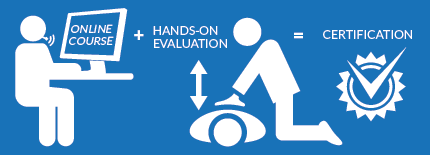The use of blended learning by training providers in CPR, the use of an AED, and first aid is relatively new though all of the national training organizations now have some form of blended learning available. Blended learning offers you the flexibility to learn at your own pace on your own schedule, anywhere and anytime you have an internet connection. The basic structure is an online training session, followed by a hands-on skills practice and evaluation session.
The hands-on portion of blended training is critical for successful completion of the skill objectives for CPR, AED, and first aid training. It is important to understand that for most learners, this session is for practice and evaluation and is not simply a “skills checkoff .” The objective of the online portion is to cover the knowledge and concepts of the topic, but not to develop the physical skills. Skills can be improved and mastered only through hands-on practice.
The benefits of blended learning for INDIVIDUALS include:
1. Accommodates individual learning styles and allows for self-paced learning
2. Participants can stop and review the training whenever necessary to ensure they completely understand the material.
3. Greater ease of scheduling for a skills practice and testing vs a regular class
4. Focused skills session with your instructors undivided attention
The benefits of blended learning for WORKPLACES include:
1. Greater convenience. Moving the learning of knowledge online can shorten hands-on skill sessions and allow for more scheduling alternatives.
2. Consistency. All learners follow the same process and are exposed to the same information.
4. Cost savings. Shorter hands-on sessions or smaller groups can significantly reduce the cost of bringing a group of people together for training.


